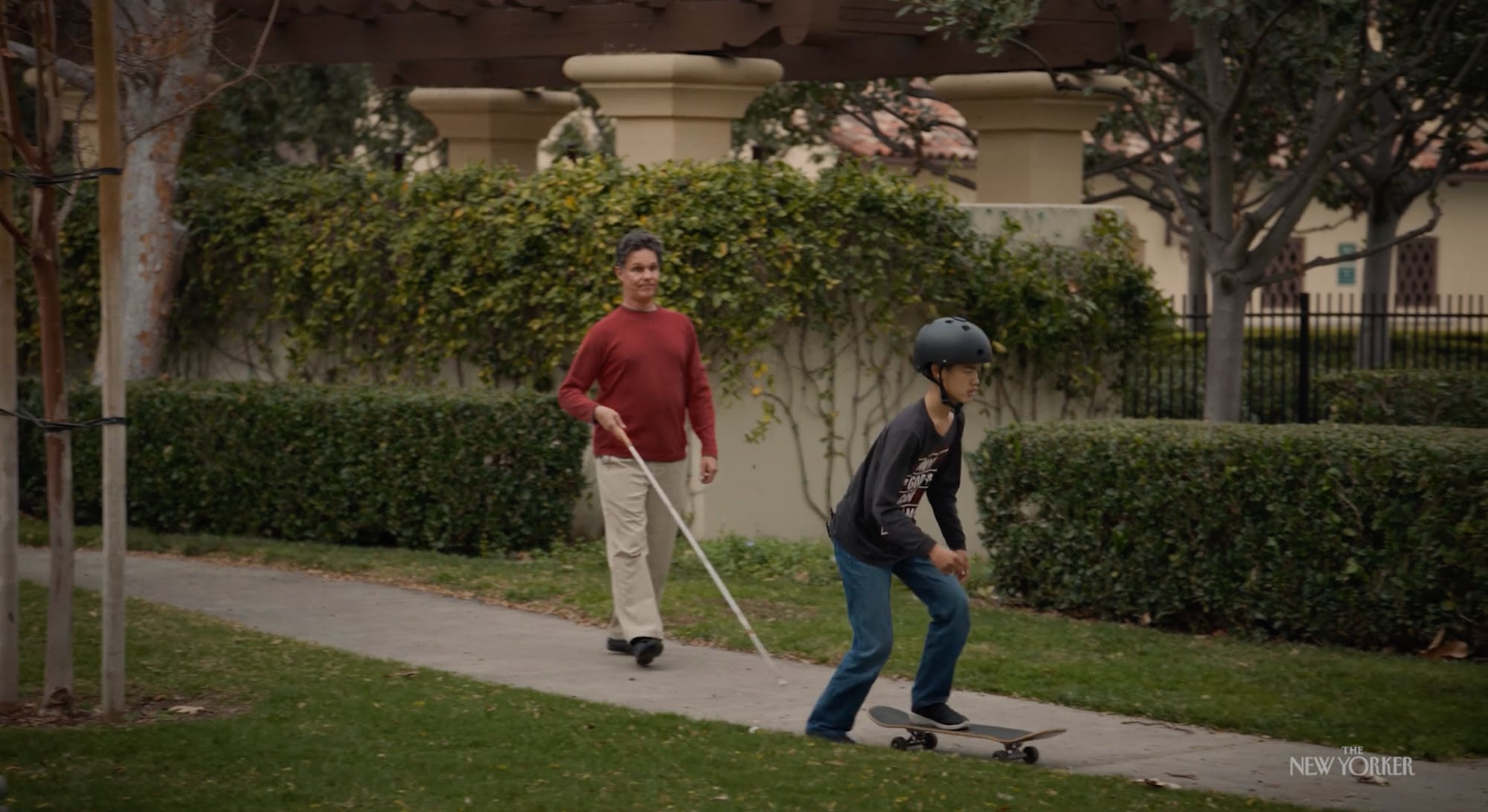This post was originally published on Colossal
Daniel Kish has taught thousands of students worldwide an essential skill: to see with sound. A lifelong advocate for the blind, Kish is a pioneer in echolocation, the ability to perceive one’s surroundings by making clicking noises or tapping a cane. As sound waves bump onto nearby walls and objects, the noises they reflect create a sort of audible map. “If I click at a surface,” he says in a new short documentary, “it answers back.”
Directed by Ben Wolin and Michael Minahan for The New Yorker, “Echo” follows Kish and a few students who have benefited from his teachings. We witness a young boy learning to skateboard despite being told it’s too dangerous and hear from Juan, the first person Kish decided to help learn echolocation who has since become a lifelong friend. As the film moves through streets and various locations, animations accompany the soundscapes to help visualize what Kish and others experience as they interpret their surroundings.
In addition to celebrating powerful bonds between people, “Echo” is also a striking example of how adaptable and ingenious the human body is, considering studies show that the brain interprets echolocation in the same region that it processes visuals for sighted people. With the proper training and a skilled teacher like Kish, echoes can provide not only the position, distance, and size of an object but also the shape and even texture.
This opens up more possibilities for experiencing the world, which Kish notes at the end of the film: “Doors aren’t open to blind kinds in this society or almost any society. The doors are shut, barred, locked. You have to kick down that door because we’ve spent millennia being kept in the dark.”
Watch “Echo” on Vimeo.

Do stories and artists like this matter to you? Become a Colossal Member today and support independent arts publishing for as little as $5 per month. The article Seeing with Sound: A Short Film Follows the Man Teaching Echolocation to Blind People appeared first on Colossal.





0 Comments